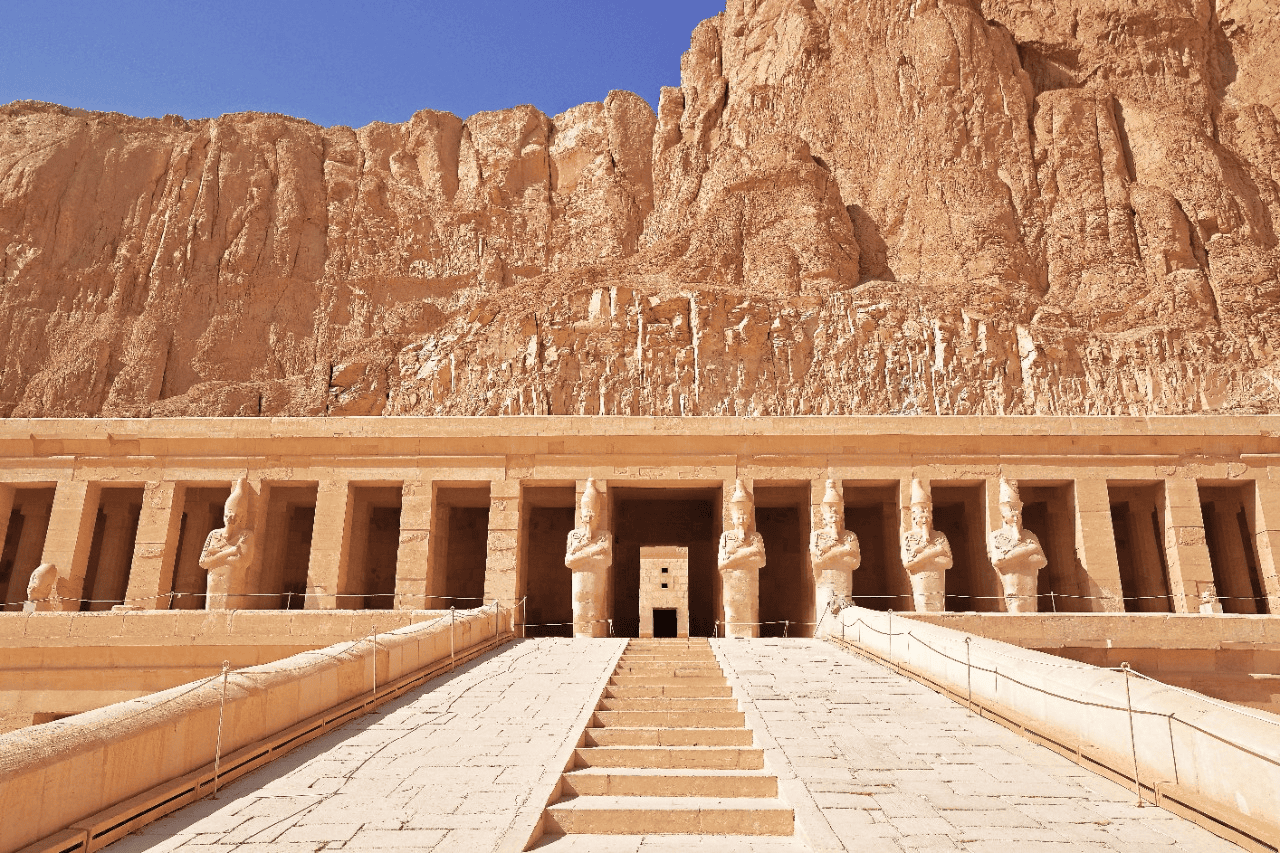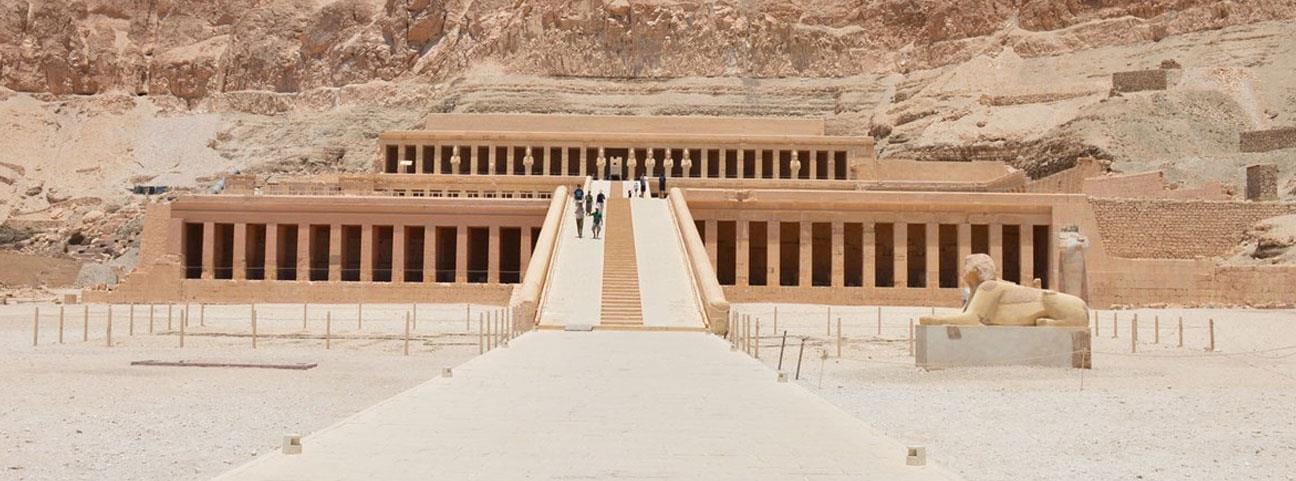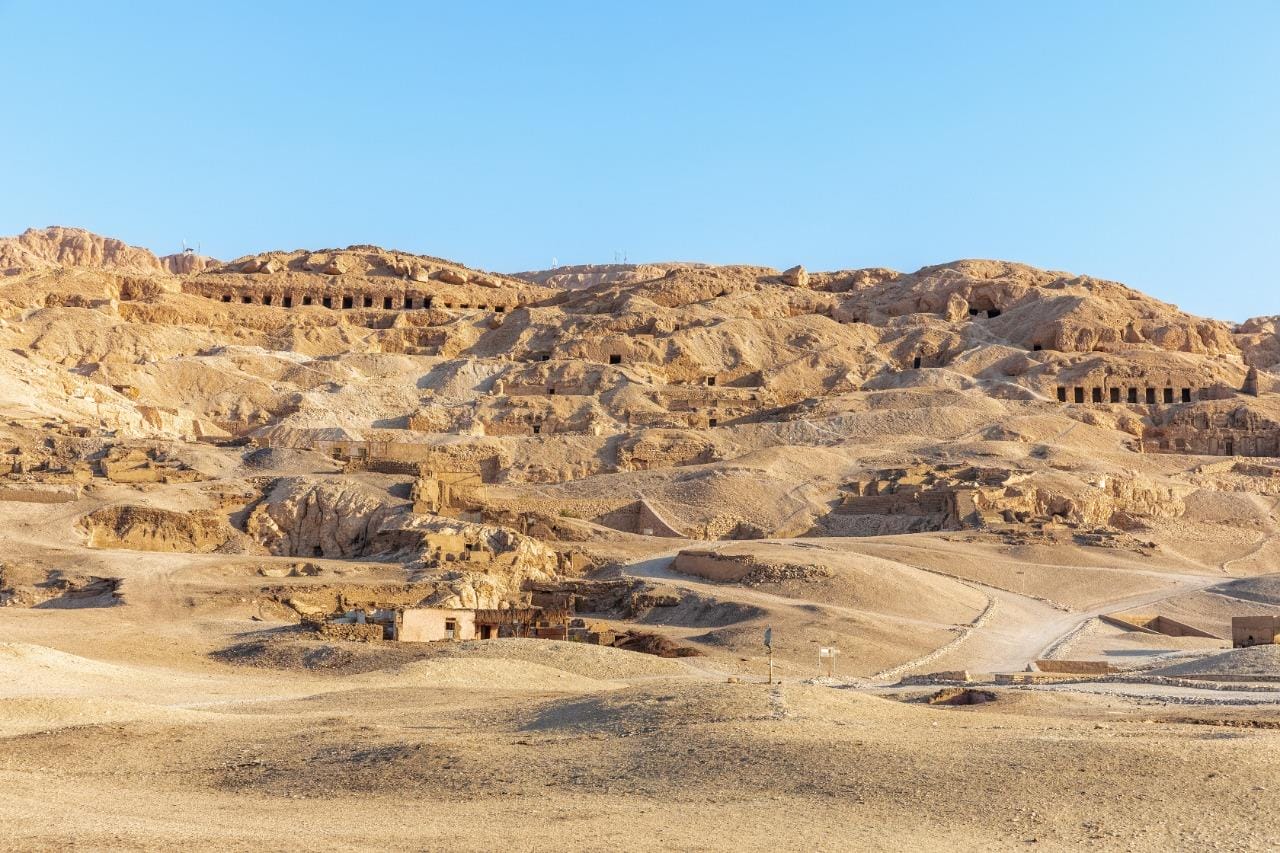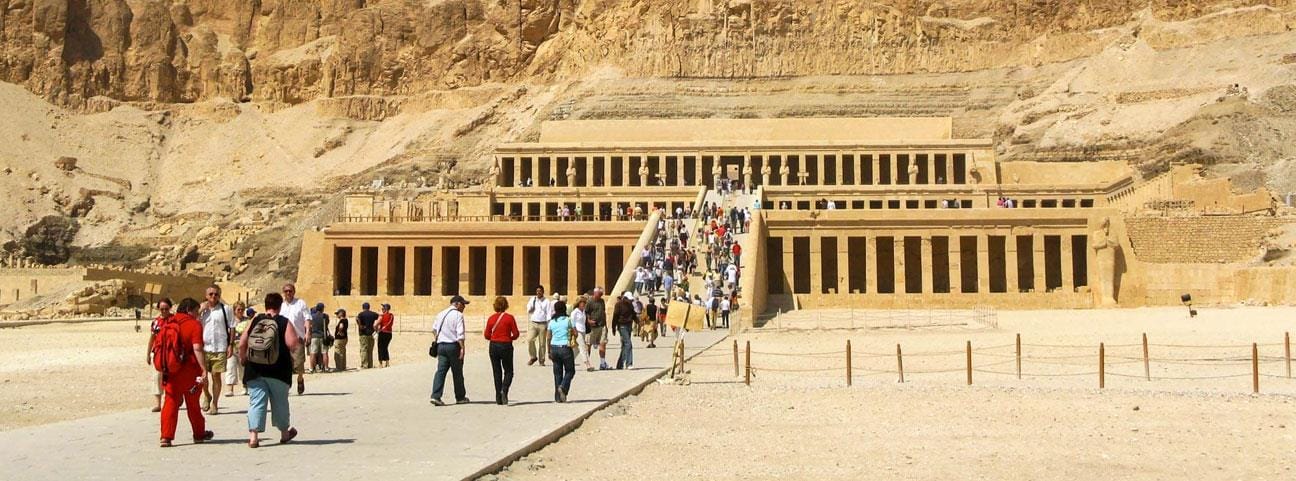West Bank
Ferry yourself across the Nile by felucca—a taxi, the Luxor way! In only five minutes, you’ll be on the West Bank, the resting place of the Middle and New Kingdoms’ elite. The Valley of the Kings and Valley of the Queens are considered part of the wider area of ancient Thebes, one of seven UNESCO World Heritage Sites located in Egypt.
Temple of Hatshepsut
Madinet Habu
Valley of the Queens & Valley of the Nobles
Valley of the Kings
The saying goes “live like a king,” but in ancient Egypt, to be buried like a king was the dream of all! The Valley of the Kings, which is located in an isolated, dried-up riverbank, has over sixty tombs, including a VIP list of ancient Egypt’s most powerful figures. You may ask why royalty ceased the practice of being buried in impressive pyramids, and the answer is tomb looting! Very visible pyramids made it all too easy for robbers to loot the treasures of the kings and queens, so to prevent this from happening, Egypt’s kings chose to be buried in well-hidden, secret rock-cut tombs in the Valley of the Kings to keep their treasures safe.
Be prepared to hike the steep rocky valley before you can witness scenes from the ancient Egyptians’ voyage through the afterlife play out on the tomb walls. Entry to three tombs is included with your entrance ticket, and you can purchase additional tomb passes if you wish, but bear in mind that tombs are open for visitors on a rotational basis to preserve the integrity of the wall paintings.
Don’t Miss
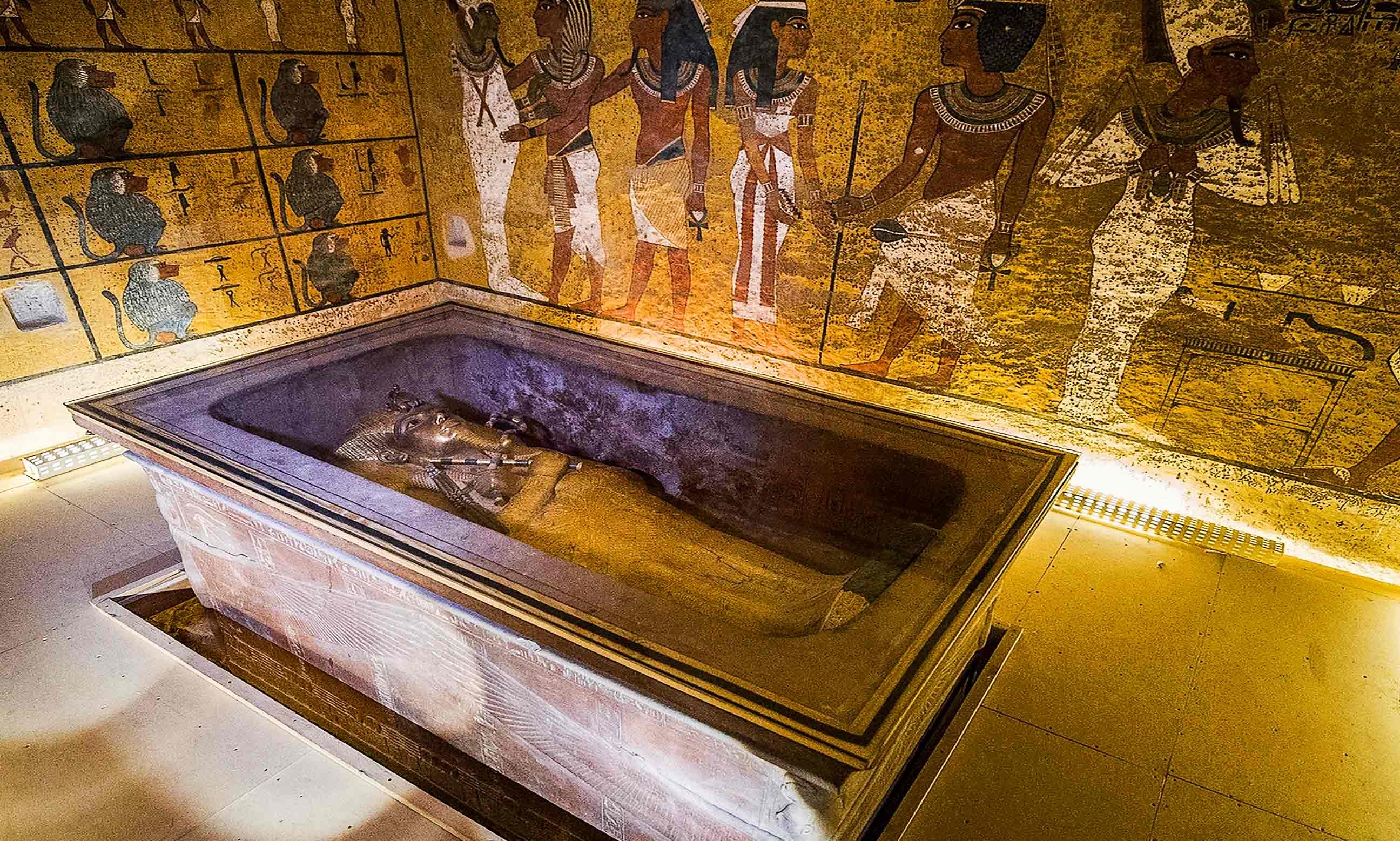
The Tomb of Tutankhamun
The only royal tomb in the Valley of the Kings that was famously discovered relatively intact by Howard Carter in 1922. Unlike most royal tombs decorated with funerary texts to help pharaohs reach the afterlife, nearly all the wall scenes in the burial chamber depict either the funeral or the Boy King in the company of various deities. Despite being packed to the brim with precious treasures upon discovery, it is relatively small in size compared to other tombs in the Valley, leaving it up to the imagination to wonder what riches initially lay in other larger tombs.
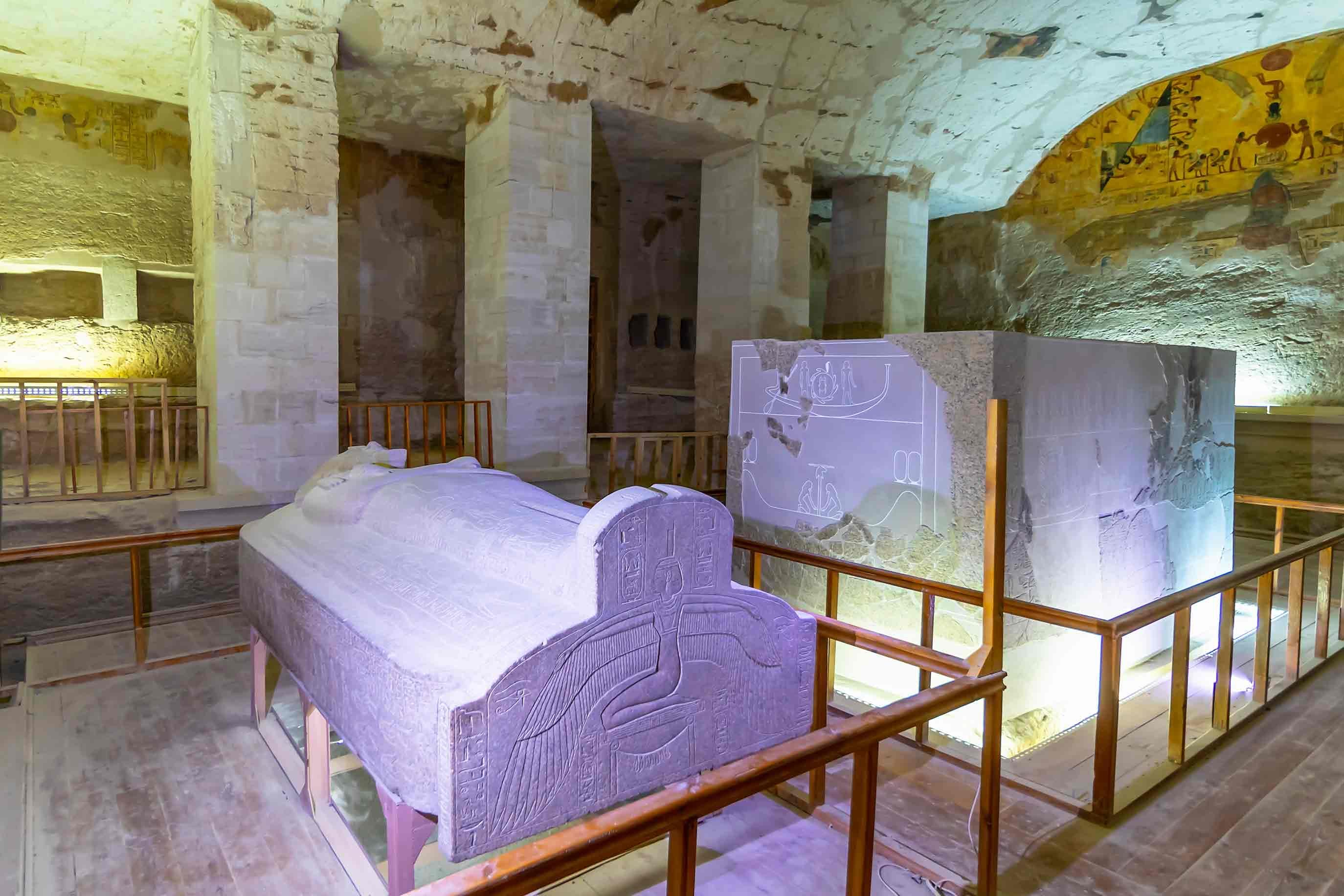
The Tomb of Ramesses VI
Stunningly decorated walls depict various funerary texts, including the Book of Gates, Book of Caverns, the Amduat, and the Book of the Dead. The ceiling of the burial chamber contains an awesome scene of the sky goddess Nut, arched over the earth. Twelve sun disks extend along the length of Nut’s body, representing the sun god’s daily twelve-hour journey through the underworld at night before his rebirth in the east, renewed and full of life. Just like the sun in the scene, Ramesses would achieve glorious rebirth at dawn.
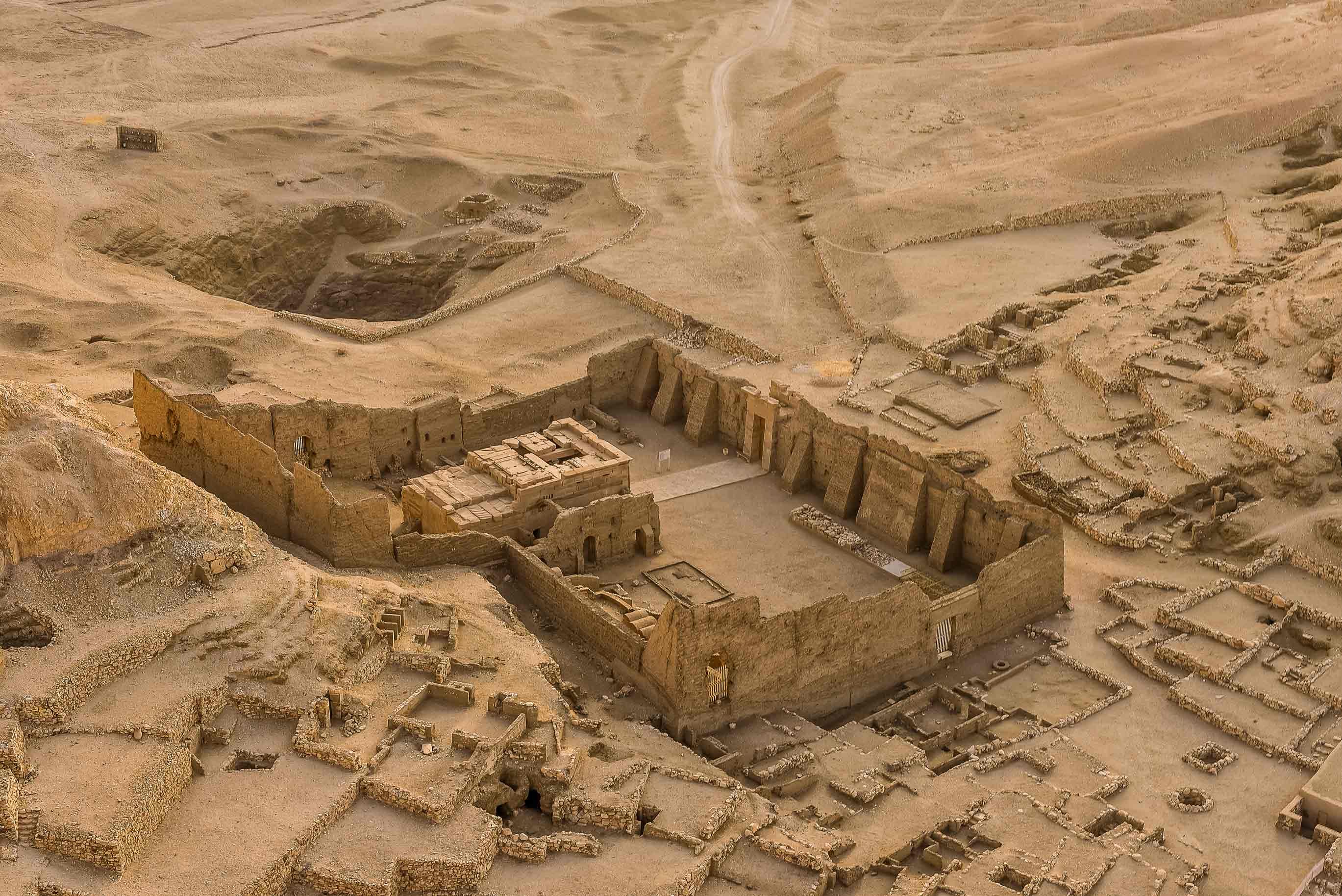
Deir al-Madina
This ancient village is exceptional because it allows you to explore the remains of homes and brightly painted tombs of a community of ancient Egyptian artisans who lived between the 18th and 20th Dynasties, the very people who made the tombs in the Valley of the Kings and Queens! A small Ptolemaic Period temple stands next to the village. The temple walls are decorated with magnificently carved and beautifully painted scenes on the walls, including a rare depiction of the ritual of the weighing of the heart for judgment in one of its chapels.
